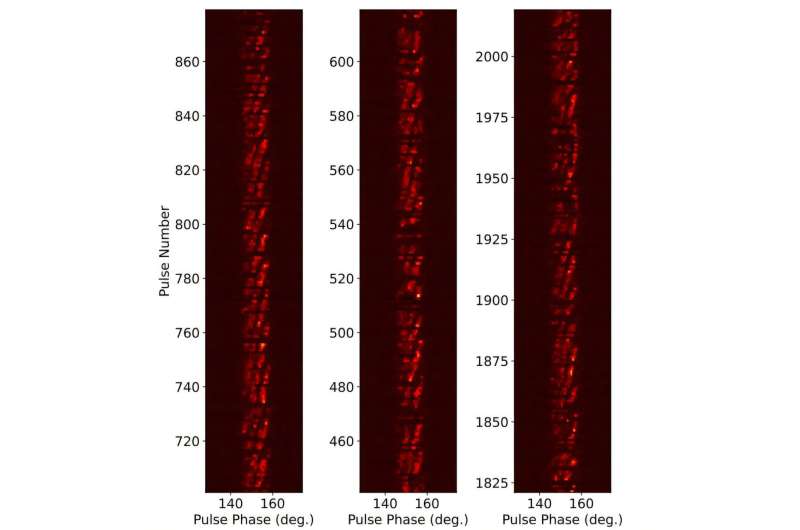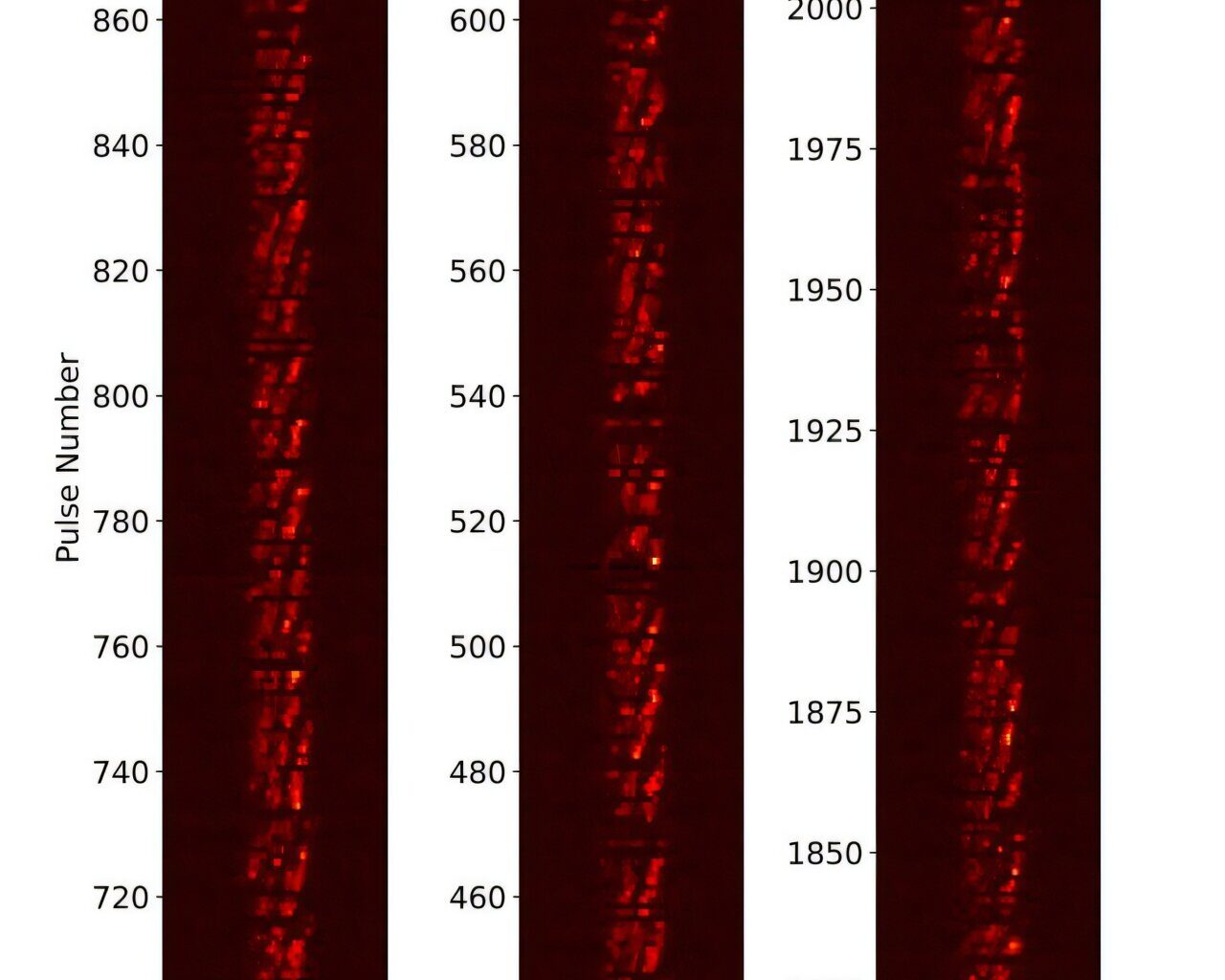
Pulse stacks of PSR J2129+4119 observed on September 29, 2024, showing three distinct behaviors: steady drifting (left), intermittent drifting with breaks (middle), and beat-like modulation (right). Credit: arXiv (2025). DOI: 10.48550/arxiv.2510.26209
Using the Five-hundred-meter Aperture Spherical Radio Telescope (FAST), astronomers from the Chinese Academy of Sciences (CAS) and elsewhere have observed a nearby pulsar known as PSR J2129+4119. Results of the observational campaign, published October 30 on the arXiv pre-print server, deliver important insights into the behavior and properties of this pulsar.
Radio emission from pulsars exhibits a variety of phenomena, including subpulse drifting, nulling, or mode changing. In the case of subpulse drifting, radio emission from a pulsar appears to drift in spin phase within the main pulse profile. When it comes to nulling, the emission from a pulsar ceases abruptly from a few to hundreds of pulse periods before it is restored.
Discovered in 2017, PSR J2129+4119 is an old and nearby pulsar located some 7,500 light years away. It has a pulse period of 1.69 seconds, dispersion measure of 31 cm/pc3, and characteristic age of 342.8 million years. The pulsar lies below the so-called “death line”—a theoretical boundary in the period-period derivative diagram below which the coherent radio emission is sustained.
Now, a team of astronomers led by Habtamu Menberu Tedila of CAS has inspected PSR J2129+4119 with high-sensitivity FAST observations, which revealed a plethora of emission phenomena from this pulsar.
“We present a detailed single-pulse study of the long-period pulsar PSR J2129+4119 using high-sensitivity FAST observations. Despite locating well below the traditional death line, the pulsar exhibits sustained and multi-modal emission behavior, including nulls, weak pulses, regular emission, and occasional bright pulses,” the researchers write in the paper.
In particular, the observations reveal that PSR J2129+4119 showcases sustained and multi-modal emission behavior, including three distinct modes: nulls, weak pulses, and regular pulses. It also occasionally emits bright pulses, quasi-periodic microstructure, and displays clear subpulse modulation features. The nulling fraction was measured to be approximately 8.13%.
Furthermore, the observations found that both regular and weak pulses of PSR J2129+4119 show high linear polarization. The collected data indicate a small impact angle of about -3 degrees, which is consistent with a near-tangential line of sight.
It appears that post-null regular pulses of the pulsar display enhanced trailing components relative to pre-null pulses. This, according to the authors of the paper, suggests gradual magnetospheric reactivation rather than a purely geometric origin.
The obtained data also show that microstructure is present in about 64% of the pulsar’s regular pulses, with mean periodicity of 4.57 milliseconds and mean width of 4.3 milliseconds.
Therefore, all the new findings indicate that PSR J2129+4119 remains magnetospherically active and coherently emitting despite its low energy loss rate.
“The pulsar’s diverse observational behavior, including beat-like modulation, emission asymmetries near nulls, and quasi-periodic microstructure, suggests that its magnetosphere operates near the threshold for coherent emission, providing valuable constraints on the physical conditions that enable or suppress pulsar radio emission,” the researchers conclude.
Written for you by our author Tomasz Nowakowski, edited by Sadie Harley, and fact-checked and reviewed by Robert Egan—this article is the result of careful human work. We rely on readers like you to keep independent science journalism alive.
If this reporting matters to you,
please consider a donation (especially monthly).
You’ll get an ad-free account as a thank-you.
More information:
Habtamu Menberu Tedila et al, Multi-Faceted Emission Properties of PSR J2129+4119 Observed with FAST, arXiv (2025). DOI: 10.48550/arxiv.2510.26209
Journal information:
arXiv
© 2025 Science X Network
Citation:
Nearby pulsar offers insights into emission physics near the death line (2025, November 6)
retrieved 6 November 2025
from https://phys.org/news/2025-11-nearby-pulsar-insights-emission-physics.html
This document is subject to copyright. Apart from any fair dealing for the purpose of private study or research, no
part may be reproduced without the written permission. The content is provided for information purposes only.

